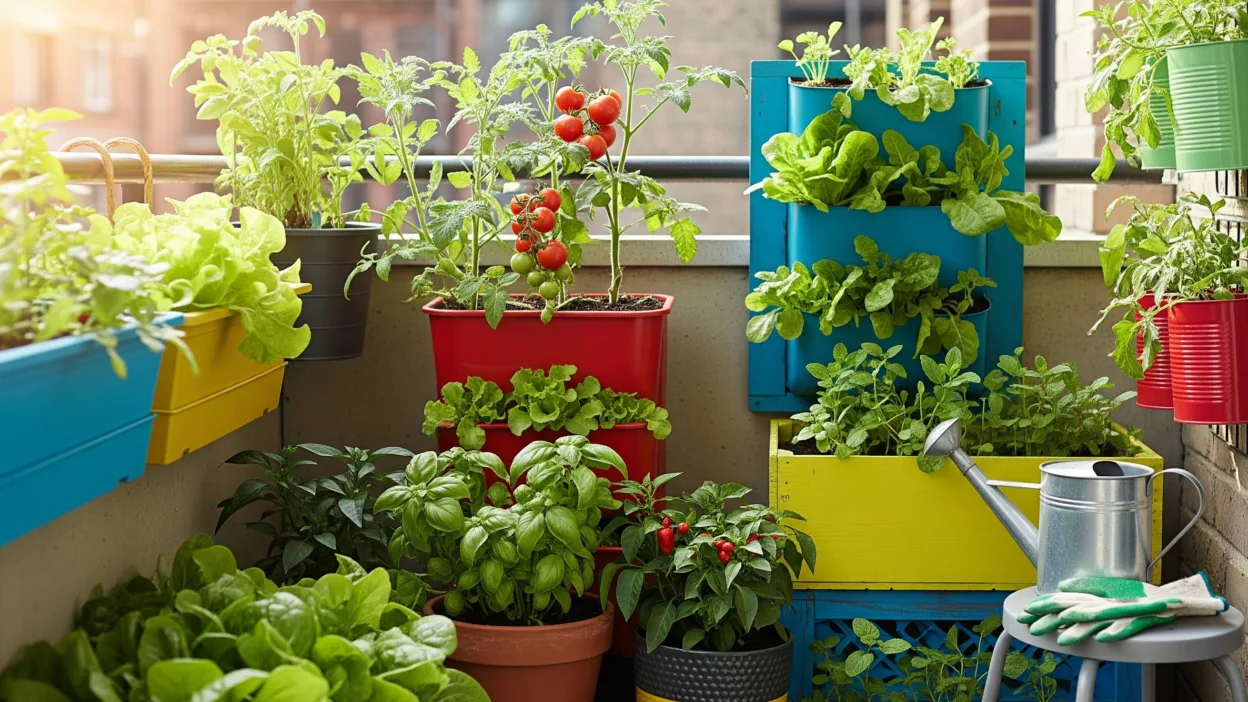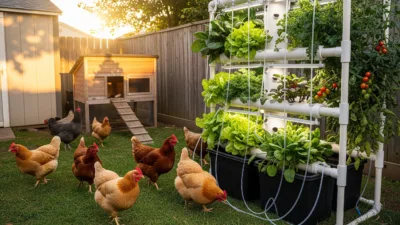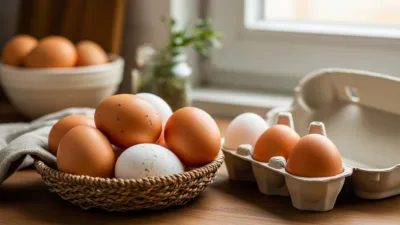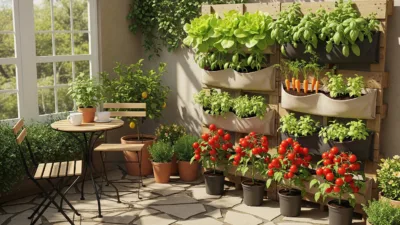Growing your own vegetables doesn’t require acres of land or a huge backyard. Even if you live in a small apartment, have a tiny balcony, or just a little patio, you can still enjoy the joy of harvesting fresh, organic produce right at home. With smart techniques and the right plants, vegetable gardening in small spaces is not only possible but also highly rewarding.
This beginners’ guide will walk you through everything you need to know about how to grow vegetables in small spaces, from choosing the right crops to space-saving gardening hacks.
Why Growing Vegetables in Small Spaces Is Worth It
Before diving into the how-to, let’s talk about why small-space gardening is a great idea:
- Fresh and Healthy Food: Nothing beats the taste of homegrown tomatoes, peppers, or herbs.
- Saves Money: Even a small vegetable garden can reduce grocery bills.
- Eco-Friendly: Growing food at home reduces packaging waste and transport emissions.
- Therapeutic and Stress-Relieving: Gardening is a proven way to relax and connect with nature.
- Works in Any Home: Whether you have a balcony, patio, rooftop, or windowsill, you can grow food.
Step 1: Assess Your Space
The first step is to understand your growing environment. Ask yourself:
- Do you have a balcony, rooftop, or patio?
- Is your space indoors near a sunny window or outdoors?
- How many hours of sunlight does your space get per day?
Most vegetables need at least 6–8 hours of direct sunlight to thrive. If you don’t have enough sunlight, don’t worry, you can still grow leafy greens or use grow lights indoors.
Step 2: Choose the Right Vegetables for Small Spaces
Not all vegetables are suitable for compact spaces, so beginners should focus on fast-growing, high-yield crops that thrive in containers.
Best Vegetables for Small Spaces
- Tomatoes – Grow beautifully in pots, hanging baskets, or vertical trellises.
- Lettuce and Spinach – Perfect for shallow containers, easy to harvest continuously.
- Radishes and Carrots – Thrive in deep pots, quick harvest in a few weeks.
- Peppers (Chili or Bell) – Compact plants that produce abundantly in containers.
- Beans and Peas – Natural climbers, excellent for vertical gardening.
- Cucumbers – Train them on trellises for high yields in little space.
- Herbs (Basil, Parsley, Mint, Thyme, Cilantro) – Great for windowsills or hanging planters.
- Green Onions and Garlic – Easy to regrow from scraps in small containers.
Pro Tip: Start small with 3–4 vegetables and expand as you gain confidence.
Step 3: Use Containers Wisely
In small spaces, containers are your best friend. You can grow almost any vegetable in a pot if it’s large enough and has good drainage.
Container Gardening Tips
- Use lightweight pots made of plastic, fabric grow bags, or recycled containers.
- Ensure drainage holes at the bottom to avoid waterlogging.
- Bigger containers mean healthier roots, use at least 5-gallon pots for tomatoes and peppers.
- For herbs and leafy greens, smaller containers (6–8 inches deep) work fine.
- Hanging baskets and railing planters are great for maximizing vertical space.
Step 4: Soil and Fertilizer for Small-Space Gardening
Healthy soil is the foundation of successful vegetable gardening.
- Use high-quality potting mix, not regular garden soil (it’s too dense for containers).
- Add compost or organic matter to boost nutrients.
- For lightweight soil, mix in perlite or coco coir for better drainage.
- Feed plants regularly with organic fertilizer or compost tea since nutrients leach out faster in containers.
Step 5: Vertical Gardening, Growing Up, Not Out
If floor space is limited, go vertical! Vertical gardening is a game changer for small patios and balconies.
Vertical Gardening Ideas
- Trellises & Stakes: Train tomatoes, beans, and cucumbers to grow upward.
- Wall Planters: Mount pots on walls or fences to grow herbs and greens.
- Hanging Baskets: Perfect for strawberries, cherry tomatoes, and herbs.
- Vertical Towers: Stackable planters that hold multiple plants in one unit.
- DIY Pallet Gardens: Reuse wooden pallets to create a rustic vertical farm.
Step 6: Watering Techniques for Small-Space Vegetables
Watering is often the biggest challenge for container gardens.
- Containers dry out faster than garden beds, so check soil daily.
- Stick your finger 1 inch into the soil, if it feels dry, it’s time to water.
- Use self-watering containers to save time.
- Water in the morning to reduce evaporation.
- Avoid overwatering, soggy soil leads to root rot.
Step 7: Light and Temperature Control
Vegetables need plenty of light, but what if your space doesn’t get full sun?
- Place pots in the sunniest spot available.
- Use reflective surfaces (like white walls) to bounce light.
- Invest in LED grow lights if indoors.
- In hot climates, use shade cloth to protect plants from burning.
Step 8: Pest and Disease Control in Small Gardens
Even small container gardens attract pests. The good news? They’re easier to manage in compact spaces.
- Companion Planting: Grow basil near tomatoes to repel pests.
- Neem Oil or Soap Spray: Natural insecticides safe for vegetables.
- Keep Soil Healthy: Healthy plants resist pests better.
- Check Plants Regularly: Inspect leaves for bugs or fungus early.
Step 9: Harvesting Tips for Beginners
The most rewarding part of gardening is harvest time!
- Harvest leafy greens regularly to encourage new growth.
- Pick tomatoes, peppers, and cucumbers when firm and colorful.
- Don’t wait too long, overripe vegetables reduce plant productivity.
- Continuous harvesting keeps plants producing for longer.
Common Mistakes Beginners Make (and How to Avoid Them)
- Overcrowding plants – Give each plant enough room to grow.
- Overwatering or underwatering – Always check soil moisture before watering.
- Using poor soil – Regular soil compacts and suffocates roots. Use potting mix.
- Neglecting sunlight – Place plants where they get at least 6 hours of direct sun.
- Starting too many crops at once – Begin with a few vegetables and expand later.
Space Saving Hacks for Small Vegetable Gardens
- Regrow kitchen scraps (green onions, lettuce, garlic, ginger).
- Use stackable planters to grow more in less space.
- Mix edible plants with decorative flowers to save space.
- Grow fast crops like radishes between slower ones like peppers.
- Install a vertical hydroponic system for year-round harvests indoors.
Best Layouts for Small-Space Vegetable Gardens
- Balcony Garden: Hanging baskets + railing planters + a vertical tower.
- Patio Garden: Mix large containers for tomatoes and peppers with smaller pots for herbs.
- Indoor Garden: Use windowsills for herbs and grow lights for leafy greens.
- Rooftop Garden: Lightweight grow bags + trellises for climbing vegetables.
Conclusion
Growing vegetables in small spaces is not only possible but also enjoyable and practical. With the right vegetables, smart container use, and vertical gardening techniques, even the tiniest balcony can become a thriving mini farm.
As a beginner, start small, choose easy vegetables like lettuce, herbs, and cherry tomatoes. Once you gain confidence, experiment with vertical gardening, companion planting, and creative layouts. Soon, you’ll be harvesting fresh, organic produce just steps away from your kitchen.
Remember: You don’t need a big yard to enjoy big harvests. All it takes is a little creativity, patience, and care. Your small space can become a green oasis full of delicious homegrown vegetables!



